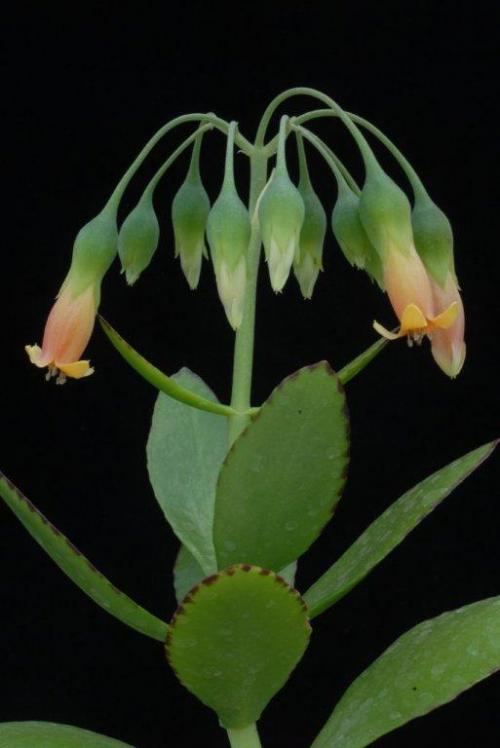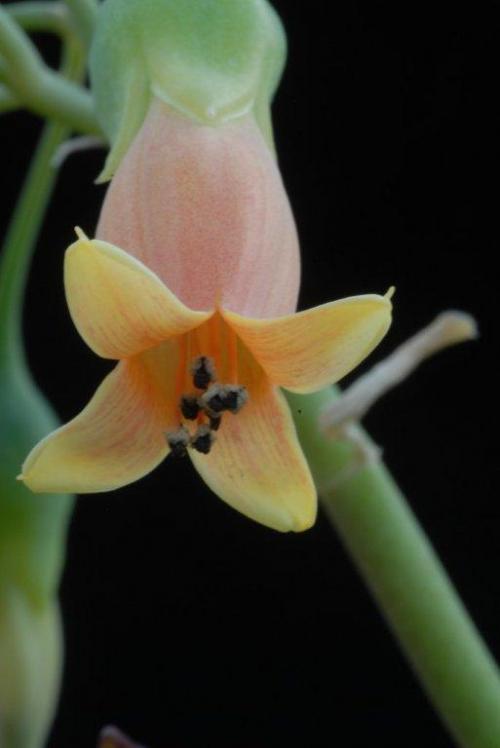STREPTANTHA Baker, 1887 (engl./ fr.)
Synonyms :
Bryophyllum streptanthum (Baker) A.Berger (1930)
Section Bryophyllum
Distribution : C-W Madagascar; sunny rocky places.
Description (by B. Descoings in IHSP, 2003) :
Perennials, entirely glabrous, robust, to 1.2 m tall.
Stems stout, 2 - 3 cm in diameter, decumbent, branched at the base.
Leaves shortly petiolate to subsessile, thick, fleshy, light green to green-bluish, edged with red to brownish, covered with a whitish bloom and glaucous, petiole 5 - 10 mm, slightly amplexicaul, lamina oblong-lanceolate, obovate to obovate-lanceolate, 4- 15 x 1 - 7.5 cm, violet-spotted, tip tapering and cuneate, acute, base gradually narrowed from the middle, margins entire or slightly sinuate.
Inflorescences few-flowered corymbose panicles 10 - 15 cm broad, peduncle to 30 cm, pedicels 6 - 25 mm.
Flowers pendent, calyx tubular, green or yellow, edged with red, sometimes hairy-glandular, tube 10 - 15 mm, sepals ovate-deltoid, acute, 4 - 9 x 6 - 8 mm, corolla yellow, tube 30 - 36 mm, petals ovate to oblong, very obtuse and cuspidate, spreading, 9 - 12 x 5 - 6 mm.
Cytology : 2n = 34
Note :
In Bradleya 39, p. 195-2001, 2021, Gideon F. Smith and Estrela Figueiredeo published an article titled "The taxonomy and nomenclature of Kalanchoe streptantha Baker (Crassulaceae subfam. Kalanchooideae)".
Comments :
1. The authors failed to emphasize the characteristic feature of this Kalanchoe, namely that a pentamerous calyx can enclose a tetramerous corolla :
- Raymond-Hamet and Perrier (1914) wrote : "Subtubuleux, tétramère ou pentamère, le calice ne s'applique point contre la corolle", et : "La corolle, très raremant pentamère est presque toujours tétramère, même lorsque le calice est pentamère".
- Boiteau & Mannoni (1949) wrote : "Calice assez souvent pentamère ...... corolle (très rarement pentamère)"
- Boiteau & Allorge-Boiteau (1995) wrote : "... grandes fleurs allongées, normalement tétramères, rarement et accidentellement pentamères, un peu moins rarement tétramères avec un calice à 5 segments."
2. On p. 197 the authors state : "Rather curiously, Hamet [ ..... ] in the first part of his two-part revision of Kalanchoe (Hamet, 1907, 1908) did not mention the flower colour (yellow), nor the purplish or brownish spots on the leaf margins when he discussed Kalanchoe streptantha."
This is correct, however the authors failed to check the much more elaborate treatment by Raymond-Hamet & Perrier de la Bâthie six years later (1914), where the colour is indicated as "tantôt en jaune pâle, tantôt en jaune d'or" – probably because this text is not in Latin, but in a rather sophisticated French. They cite the text under "Nomenclature of Kalanchoe streptantha" but obviously did not peruse it.
-----------------------------------------------------------------------------------------------------
Synonymes :
Bryophyllum streptanthum (Baker) A.Berger (1930) / Kitchingia streptantha (Baker) Allorge-Boiteau (1995)
Section Bryophyllum
Distribution : Centre-ouest de Madagascar ; lieux rocheux ensoleillés.
Description (par B. Descoings dans IHSP, 2003) :
Plante vivace entièrement glabre, robuste, atteignant 1,2 m de haut.
Tiges épaisses, 2 - 3 cm de diamètre, décombantes, ramifiées à la base.
Feuilles brièvement pétiolées à presque sessiles, épaisses, charnues, vert clair à vert bleuté, bordées de rouge ou de marron, couvertes d'une pruine blanchâtre et glauque, pétiole de 5 - 10 mm, légèrement amplexicaule, limbe oblong-lancéolé, oboval à oboval-lancéolé, 4- 15 x 1 - 7,5 cm, tacheté de violet, extrémité atténuée et cunée, aiguë, base graduellement rétrécie à partir du milieu, marges entières ou légèrement sinuées.
Inflorescences en panicules corymbiformes peu fleuries de 10 - 15 cm de large, pédoncule atteignant 30 cm, pédicelles de 6 - 25 mm.
Fleurs pendantes, calice tubulaire, vert ou jaune, bordé de rouge, parfois avec poils glandulifères, tube de 10 - 15 mm, sépales ovales-deltoïdes, aigus, 4 - 9 x 6 - 8 mm, corolle jaune, tube de 30 - 36 mm, pétales ovales à oblongs, très obtus et cuspidés, écartés, 9 - 12 x 5 - 6 mm.
Cytologie : 2n = 34
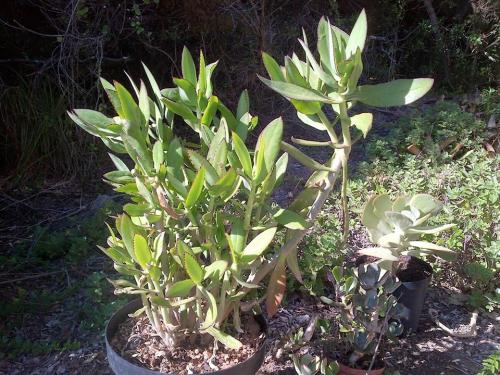
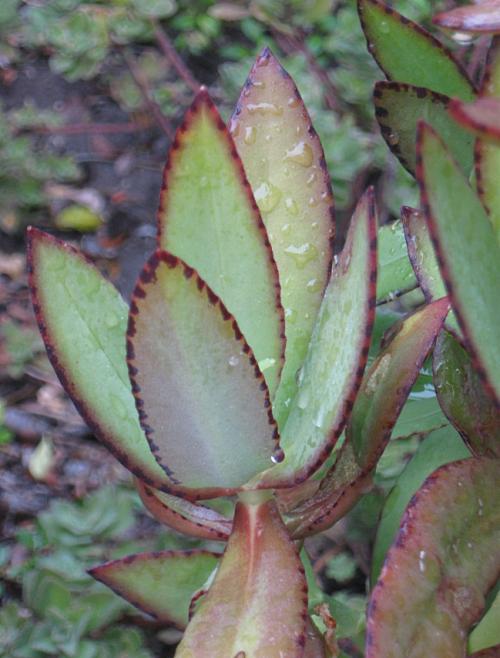
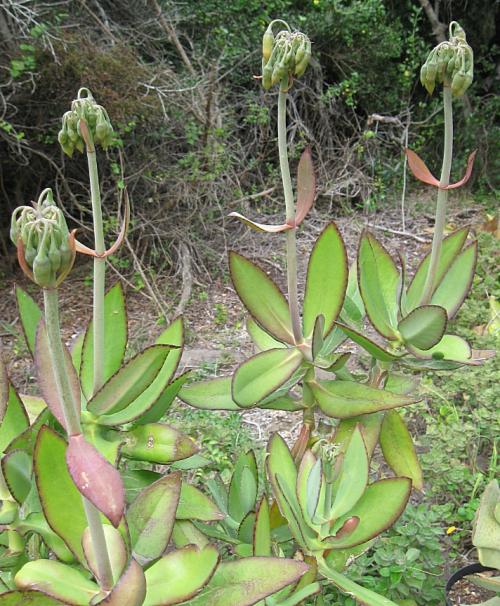
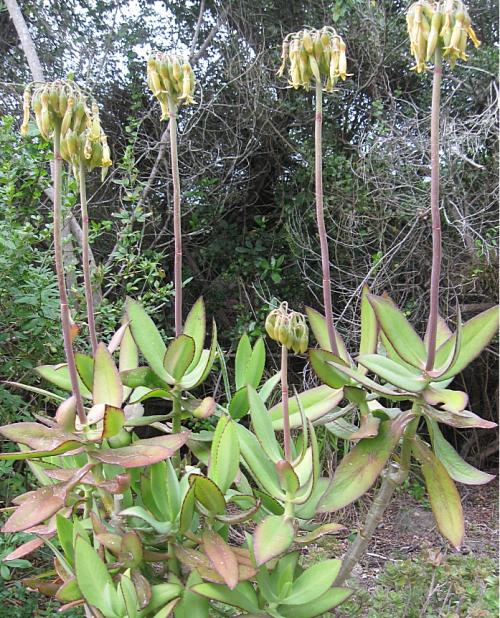

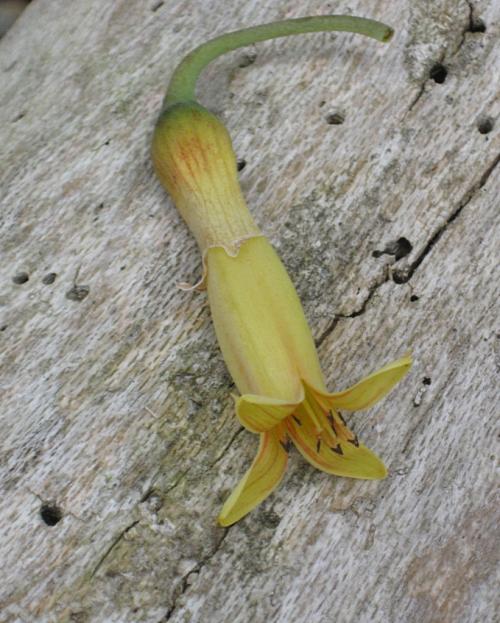
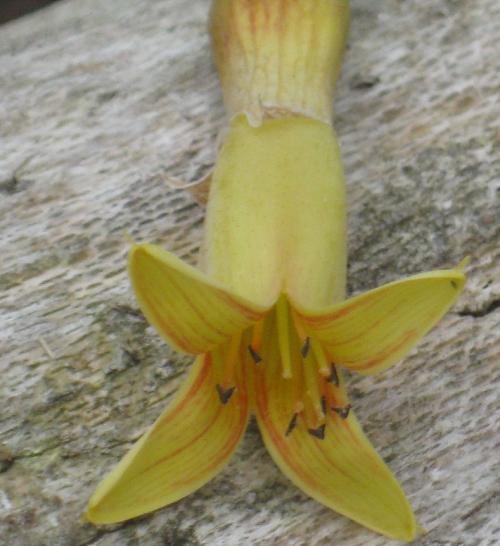
Photos Jacquie Koutsoudis
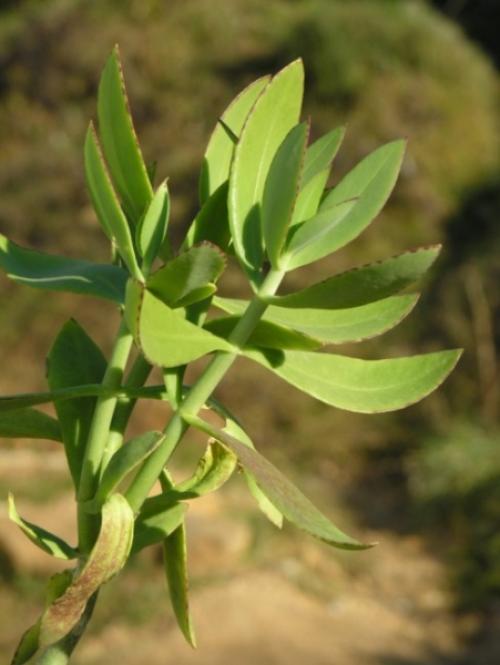
Photo Bernard Descoings
